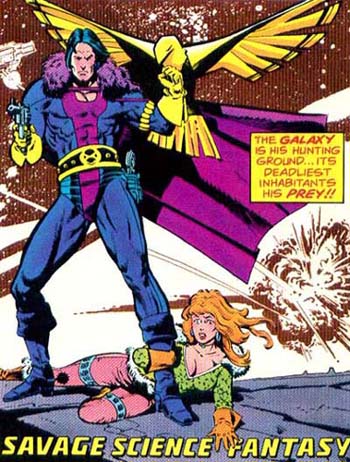 |
| Angus McKie |
Back when I talked about the
Strange Stars "
Appendix N," I mentioned how I saw the stylings of this particular future as harkening back to previous decades. I imagine spaceships like in seventies films, seventies and eighties book covers and comics books, and particularly the Terran Trade Authority books.
 |
| Terran Trade Authority |
Also, the groovy fashions of late sixties and seventies book cover art, the euro-sensibilities of
Heavy Metal, and disco-era comic book sci-fi in the U.S. inform how I view the fashion and material culture. Sure they're silly in a lot of ways, but often so are clothes from real historical eras to modern sensibilities.
 |
| Chaykin's Monark Starstalker |
 |
| Mike Grell's Charma |
Now as anyone who's been reading the posts knows, I'm not doing retro-sci-fi, overall. It's just that it seems like the there is a narrow range of how the future is viewed in any given era. Science fiction done today tends to look the same: a lot of darkness, sleek suits, and electric blue holograms, etc. I'm certainly not immune to recent influences, but I feel like those things get too familiar. The future needs to seem exotic and going back to the past is a way to restore some of that exoticism. At least it reminds me (and maybe other around my age) of a time where the future looked different, and we were young enough to be encountering these images and the ideas behind them for the first time.







